
漢德百科全書 | 汉德百科全书

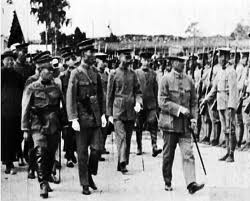


Die Allianz zwischen der Sowjetunion, der KP Chinas und der Guomindang beschließt die 北伐战争 Nordexpedition mit dem Ziel, China unter der Flagge der Guomindang zu vereinen und die Herrschaft der örtlichen Kriegsfürsten zu beenden
 北京市-京
北京市-京
 中国
中国
 中国足球超级联赛 2019
中国足球超级联赛 2019

 财政金融
财政金融
 ***全球金融中心
***全球金融中心

 历史
历史
 公元 1500 - 2000
公元 1500 - 2000

 历史
历史
 公元 1000 - 1500
公元 1000 - 1500

 历史
历史
 公元 2000 - 2100
公元 2000 - 2100

 国际城市
国际城市
 ***全球城市经济竞争力
***全球城市经济竞争力
 国际铁人三项联盟冠军系列赛
国际铁人三项联盟冠军系列赛
 京杭大运河
京杭大运河
 英雄联盟
英雄联盟
 英雄联盟全球总决赛
英雄联盟全球总决赛
 夏季奥林匹克运动会
夏季奥林匹克运动会
 2022冬季奥林匹克运动会
2022冬季奥林匹克运动会
 丝绸之路
丝绸之路
 上海合作组织
上海合作组织

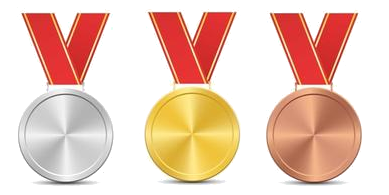 体育
体育
 铁人三项
铁人三项

 假期和旅游
假期和旅游

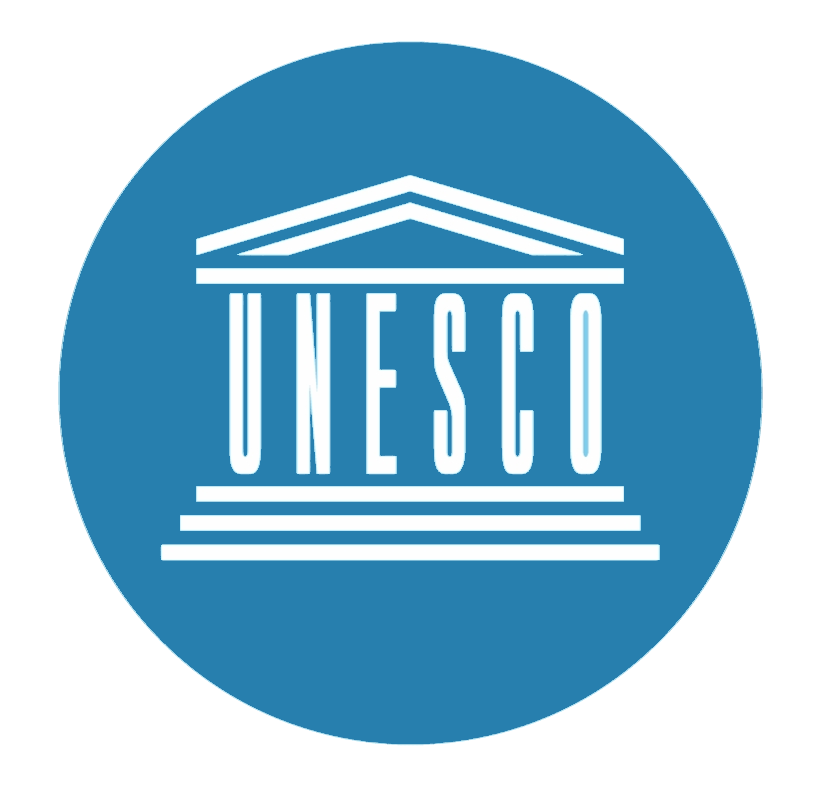 文化遗产
文化遗产
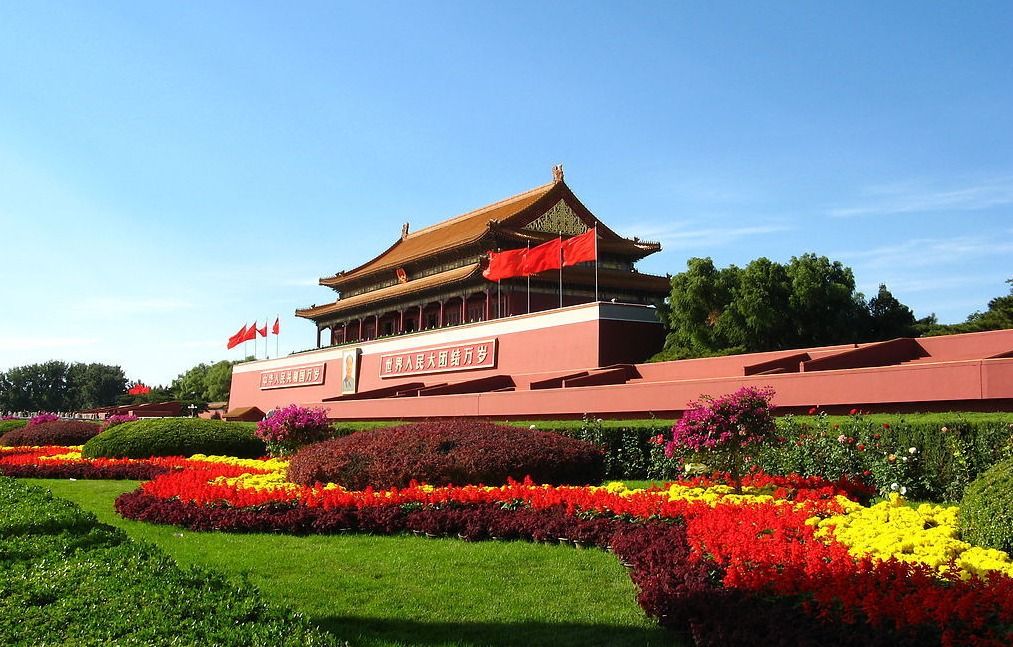
Peking (chinesisch 北京, Pinyin Běijīng, W.-G. Pei-ching auch Beijing, ![]() [pei˨˩tɕiŋ˥˥], deutsch historisch Pekingen[2]) ist die Hauptstadt der Volksrepublik China. Der Name bedeutet Nördliche Hauptstadt (vgl. Nanjing für Südliche Hauptstadt). Peking hat eine über dreitausendjährige Geschichte und ist heute eine regierungsunmittelbare Stadt, das heißt, sie ist direkt der Zentralregierung unterstellt und damit Provinzen, autonomen Gebieten und Sonderverwaltungszonen gleichgestellt.
[pei˨˩tɕiŋ˥˥], deutsch historisch Pekingen[2]) ist die Hauptstadt der Volksrepublik China. Der Name bedeutet Nördliche Hauptstadt (vgl. Nanjing für Südliche Hauptstadt). Peking hat eine über dreitausendjährige Geschichte und ist heute eine regierungsunmittelbare Stadt, das heißt, sie ist direkt der Zentralregierung unterstellt und damit Provinzen, autonomen Gebieten und Sonderverwaltungszonen gleichgestellt.
Das gesamte 16.807 Quadratkilometer große (etwas größer als Schleswig-Holstein) Verwaltungsgebiet Pekings hat 21,5 Millionen Einwohner (Stand: März 2016).[3] Es stellt kein zusammenhängendes Stadtgebiet dar, mit seiner dominierenden ländlichen Siedlungsstruktur ist es eher mit einer Provinz vergleichbar.[4] Von der Gesamtbevölkerung sind 11,8 Millionen registrierte Bewohner mit ständigem Wohnsitz (戶口 / 户口, hùkǒu) und 7,7 Millionen temporäre Einwohner (流動人口 / 流动人口, liúdòng rénkǒu) mit befristeter Aufenthaltsgenehmigung (暫住證 / 暂住证, zànzhùzhèng).[5] Wird die Kernstadt (hohe Bebauungsdichte und geschlossene Ortsform) als Grundlage genommen, leben in Peking 7,7 Millionen Menschen mit Hauptwohnsitz (2007).[6] Der Ballungsraum (einschließlich Vororte) hat 11,8 Millionen Einwohner (2007).[7] Ab 2017 soll die Metropole Kern einer Megalopolis von 130 Millionen Einwohnern namens Jing-Jin-Ji werden.
Peking stellt als Hauptstadt das politische Zentrum Chinas dar. Aufgrund der langen Geschichte beherbergt Peking ein bedeutendes Kulturerbe. Dies umfasst die traditionellen Wohnviertel mit Hutongs, den Tian’anmen-Platz (chinesisch Platz am Tor des Himmlischen Friedens), die 1987 von der UNESCO zum Weltkulturerbe erklärte Verbotene Stadt, den neuen und alten Sommerpalast und verschiedene Tempel, wie z. B. den Himmelstempel, den Lamatempel und den Konfuziustempel.(2012)
Beijing ist auch eine der berühmtesten kulturhistorischen Städte mit einer ereignisreichen Geschichte in der Welt und zählt zu den sieben alten Hauptstädten Chinas. Vor 700 000 Jahren lebten hier schon die sogenannten „Peking-Menschen". Die Stadt Beijing wurde 938 der provisorische Sitz der Liao-Dyna-stie (907-1125) und diente 800 Jahre lang als die Hauptstadt der Jin- (1115-1234), der Yuan-(1279-1368). der Ming-(1368-1644) und der Qing-Dynastie (1644-1911). Zahlreiche weltbekannte Sehenswürdigkeiten und historische Stätten sind auf den heutigen Tage erhalten geblieben, darunter der Kaiserpalast als größter Palastkomplex der Welt, die Große Mauer als eines der acht Weltwunder, der Himmelstempel als weltweit größter Opferaltar für den Himmel, die Ming-Gräber als konzentrierte kaiserliche Grabanlagen in der Welt und der Sommerpalast als weltweit größte kaiserliche Parkanlage.
Die Vororte Beijings sind von Bergen umgeben und haben schöne Landschaft. Dort sind alte Tempel, Teiche, Wasserfälle und dörfliches Idyll zu sehen. Darüber hinaus wird das Stadtbild von einer hohen Anzahl von modernen Gebäuden geprägt. Auch große Vergnügungsparks, Zoos, botanische Gärten, städtische öffentliche Plätze und Parks in der Stadt üben eine große Anziehungskraft auf Touristen aus.
北京市(ペキンし、中国語: 北京市、拼音: )は、中華人民共和国の首都である。
行政区画上は直轄市であり、中国の華北の中央に位置する。人口は2152万(2014年)であり、中国では上海に次ぐ第二の都市。世界有数のメガシティであり、極めて高い影響力を有する世界都市でもある。古くは大都・燕京・北平とも呼ばれた。
春秋戦国時代には燕の首都で薊(けい)と称された。周の国都洛陽からは遠く離れ、常に北方の匈奴などの遊牧民族の侵入による被害を受ける辺境であった。秦漢代には北平(ほくへい)と称されるが、満州開発が進み、高句麗など周辺国の勢力が強大となると、戦略上、また交易上の重要な拠点として重視されるようになった。北京市に隣接する河北省涿郡(たくぐん)は三国志の英雄劉備の故郷で知られるとともに隋の煬帝が築いた大運河の北の起点とされている。
唐末五代の騒乱期、内モンゴルから南下してきた遼朝は、後晋に対し軍事支援を行った代償として北京地方を含む燕雲十六州を割譲された。遼はこの都市を副都の一つ南京と定めた。その後金朝が遼を滅ぼし支配権を獲得すると、金は北京に都城を定め中都とした。更にモンゴル帝国(元朝)が金を滅ぼすと大都として元朝の都城となり、カラコルムに代わってモンゴル帝国の中心となった。
朱元璋が元を北方に駆逐し明朝が成立すると、名称は北平に戻され、都城は南京に定められた。しかし、燕王に封じられ北京を拠点とした朱棣(後の永楽帝)は、1402年に建文帝に対し軍事攻撃を行い政権を奪取。皇帝に即位した後北京遷都を実行し地名を北京に改めた。辛亥革命後は中華民国北洋政府は北京を首都と定めたが、南京を首都と定めた蒋介石を中心とする国民政府は、「政府直轄地域」を意味する直隷省を1928年6月15日に河北省へ、北の首都を意味する北京を北平(ほくへい、ベイピンBěipíng)へと、それぞれ改称した。1937年から1945年まで続いた日本軍占領期は北京の名称が用いられ(公式には1940年に改名)、日本の敗戦によって再び北平に改称された。
1949年10月1日の中華人民共和国成立により新中国の首都とされた北京(北平)は再び北京と改称され現在に至っている。しかし、中華人民共和国の存在を承認せず、南京を公式な首都として大陸地区への統治権を主張する中華民国(台湾)では、現在でも公式名称として「北平」の名称が用いられている。
Beijing (/beɪˈdʒɪŋ/;[10] Mandarin: [pèi.tɕíŋ] (![]() listen)), formerly romanized as Peking,[11] is the capital of the People's Republic of China, the world's third most populous city proper, and most populous capital city. The city, located in northern China, is governed as a municipality under the direct administration of central government with 16 urban, suburban, and rural districts.[12] Beijing Municipality is surrounded by Hebei Province with the exception of neighboring Tianjin Municipality to the southeast; together the three divisions form the Jingjinji metropolitan region and the national capital region of China.[13]
listen)), formerly romanized as Peking,[11] is the capital of the People's Republic of China, the world's third most populous city proper, and most populous capital city. The city, located in northern China, is governed as a municipality under the direct administration of central government with 16 urban, suburban, and rural districts.[12] Beijing Municipality is surrounded by Hebei Province with the exception of neighboring Tianjin Municipality to the southeast; together the three divisions form the Jingjinji metropolitan region and the national capital region of China.[13]
Beijing is an important capital and global power city, and one of the world's leading centers for politics, economy and business, finance, education, culture, innovation and technology, architecture, language, and diplomacy. A megacity, Beijing is the second largest Chinese city by urban population after Shanghai and is the nation's political, cultural, and educational center.[14] It is home to the headquarters of most of China's largest state-owned companies and houses the largest number of Fortune Global 500 companies in the world.[15] It is also a major hub for the national highway, expressway, railway, and high-speed rail networks. The Beijing Capital International Airport has been the second busiest in the world by passenger traffic since 2010,[16] and, as of 2016, the city's subway network is the busiest and second longest in the world.
Combining both modern and traditional architecture, Beijing is one of the oldest cities in the world, with a rich history dating back three millennia. As the last of the Four Great Ancient Capitals of China, Beijing has been the political center of the country for most of the past eight centuries,[17] and was the largest city in the world by population for much of the second millennium A.D.[18] Encyclopædia Britannica notes that "few cities in the world have served for so long as the political headquarters and cultural center of an area as immense as China."[19] With mountains surrounding the inland city on three sides, in addition to the old inner and outer city walls, Beijing was strategically poised and developed to be the residence of the emperor and thus was the perfect location for the imperial capital. The city is renowned for its opulent palaces, temples, parks, gardens, tombs, walls and gates.[20] It has seven UNESCO World Heritage Sites – the Forbidden City, Temple of Heaven, Summer Palace, Ming Tombs, Zhoukoudian, and parts of the Great Wall and the Grand Canal – all popular locations for tourism.[21] Siheyuans, the city's traditional housing style, and hutongs, the narrow alleys between siheyuans, are major tourist attractions and are common in urban Beijing.
Pékin2 (en chinois : 北京 ; pinyin : běijīng ; API : [pe˨˩˦i.tɕi˥ŋ] Écouter la prononciation en mandarin, littéralement « capitale du nord »), également appelée Beijing, est la capitale de la République populaire de Chine. Située dans le nord du pays, la municipalité de Pékin (北京市, abrégé en 北京), d'une superficie de 16 800 km2, borde la province du Hebei ainsi que la municipalité de Tianjin. Pékin est considérée comme le centre politique et culturel de la Chine, tandis que Hong Kong et Shanghai dominent au niveau économique.
D'abord ville périphérique de l'empire chinois sous les Han et les Tang, elle prend de l'importance lorsque les Jurchen, qui fondent la dynastie Jin, la choisissent comme leur capitale principale en 1153. Le prince mongol Kubilai Khan en fait de même sous le nom de Dadu (« grande métropole »), enfin les Ming y transfèrent leur administration en 1421, parachevant le choix de Pékin comme capitale de la Chine. Située à proximité de la Grande Muraille, Pékin abrite des monuments célèbres comme la Cité interdite et le Temple du ciel, qui sont inscrits au patrimoine mondial. De nombreuses réalisations architecturales et structurelles ont modifié la ville à l'occasion des Jeux olympiques d'été dont elle a été l'hôte en 2008. Beijing a été choisie par le CIO pour organiser les Jeux olympiques d'hiver de 2022 et sera la première ville à avoir accueilli les deux éditions de l'évènement sportif international.
Avec 21,15 millions d'habitants en 2013, Pékin est la deuxième ville la plus peuplée de Chine après Shanghai. La zone urbaine compte quant à elle 18 millions d'habitants. Le parler pékinois forme la base du mandarin standard. D'un point de vue économique, Pékin est la troisième ville de Chine par le PIB total derrière Shanghai et Hong Kong. Elle connaît une croissance économique très rapide, nettement plus de 10 % par an dans les années 2000. Un nouveau Central business district (CBD) est en construction.
Pechino (AFI: /peˈkino/[1]; in cinese 北京S, BěijīngP, letteralmente "capitale del nord", ) è la capitale della Cina e della municipalità omonima.
L'intera municipalità ha dimensioni pari a poco più della metà del Belgio avendone però quasi il doppio degli abitanti (21.516.000[senza fonte]). Pechino è la seconda città più popolata della Cina dopo Shanghai, la capitale di Stato più popolata al mondo, e la seconda città del mondo per popolazione. Confina esclusivamente con la provincia dell'Hebei e a sud-est con la municipalità di Tientsin.
Pekín, Pequín o Beijing (chino simplificado y tradicional: 北京, pinyin: Běijīng, Wade-Giles: Pei-ching, pronunciado: (![]() escuchar), literalmente «capital del Norte») es uno de los cuatro municipios que, junto con las veintidós provincias, cinco regiones autónomas y dos regiones administrativas especiales, conforman la República Popular China. Además Pekín es la capital del país y una de las ciudades más pobladas del mundo con 21 150 000 personas en 2013.2
escuchar), literalmente «capital del Norte») es uno de los cuatro municipios que, junto con las veintidós provincias, cinco regiones autónomas y dos regiones administrativas especiales, conforman la República Popular China. Además Pekín es la capital del país y una de las ciudades más pobladas del mundo con 21 150 000 personas en 2013.2
Situada en la periferia de la antigua civilización china, Pekín se convirtió en el baluarte de las potencias extranjeras que ocuparon China del Norte entre los siglos X y XII. La dinastía Liao estableció aquí su capital meridional, la más acreditada de las cinco del reino. La dinastía Jin, la siguiente dinastía "bárbara" emprendió un amplio proyecto urbanístico a imagen de la capital de los Song septentrionales, Kaifeng. En 1215 los mongoles arrasaron la ciudad, pero 50 años después Kublai Kan decidió edificar en ella la nueva capital.
En la zona centro-sur del trazado hipodámico se hallaba la colosal villa imperial que contenía el complejo de palacios imperiales. El emperador Yongle, el tercer Ming, decidió trasladar la capitalidad a Pekín. Las murallas del lado septentrional fueron trasladadas más hacia el Sur para que el complejo palaciego imperial, la llamada Ciudad Prohibida, quedase exactamente en el centro del plano. Así la estructura del nuevo Pekín representa la cima del urbanismo tradicional chino, basado en la organización introducida por los mongoles así como en la estructura de los palacios imperiales de Kaifeng y Nankín además de tomar en consideración las normas de la geomancia china (風水).
Pekín es uno de los cuatro municipios de China que poseen un estatus provincial y están bajo el control directo del gobierno central. Pekín ha sido municipalidad desde la creación de la República Popular China. Es una de las ciudades más pobladas de China, tan sólo superada por Shanghái en cuanto a población. Es considerada el corazón cultural, político y social de China.
Пеки́н (кит. 北京, пиньинь: Běijīng, палл.: Бэйцзин, буквально: «Северная столица») — столица и один из городов центрального подчинения Китайской Народной Республики. Пекин с трёх сторон окружён провинцией Хэбэй и граничит с Тяньцзинем на юго-востоке.
Это крупнейший железно- и автодорожный узел и один из основных авиаузлов страны. Кроме того, Пекин является политическим, образовательным и культурным центром КНР, в то время как главными экономическими центрами считаются Шанхай и Гонконг. Вместе с тем, в последнее время всё больше берёт на себя роль локомотива предпринимательской деятельности и основного поля для создания инновационных предприятий.
Входит в число четырёх древних столиц Китая. В 2008 году в городе прошли Летние Олимпийские игры. В 2022 году в городе пройдут Зимние Олимпийские игры.





Benito Amilcare Andrea Mussolini (* 29. Juli 1883 in Dovia di Predappio, Provinz Forlì; † 28. April 1945 in Giulino di Mezzegra, Provinz Como) war ein italienischer Politiker. Er war von 1922 bis 1943 Ministerpräsident des Königreiches Italien. Als Duce del Fascismo („Führer des Faschismus“) und Capo del Governo („Chef der Regierung“) stand er ab 1925 als Diktator an der Spitze des faschistischen Regimes in Italien.
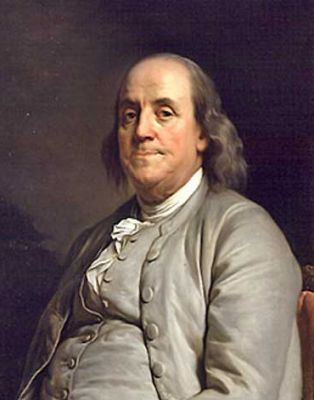
Benjamin Franklin (* 6. Januarjul. / 17. Januar 1706greg. in Boston, Province of Massachusetts Bay; † 17. April 1790 in Philadelphia, Pennsylvania) war ein amerikanischer Drucker, Verleger, Schriftsteller, Naturwissenschaftler, Erfinder und Staatsmann.
Als einer der Gründerväter der Vereinigten Staaten beteiligte er sich am Entwurf der Unabhängigkeitserklärung der Vereinigten Staaten und war einer ihrer Unterzeichner. Während der Amerikanischen Revolution vertrat er die Vereinigten Staaten als Diplomat in Frankreich und handelte sowohl den Allianzvertrag mit den Franzosen als auch den Frieden von Paris aus, der den Amerikanischen Unabhängigkeitskrieg beendete. Als Delegierter der Philadelphia Convention beteiligte er sich an der Ausarbeitung der amerikanischen Verfassung.
Franklins Leben war in hohem Maße von dem Willen geprägt, das Gemeinwesen zu fördern. Er gründete die ersten Freiwilligen Feuerwehren in Philadelphia sowie die erste Leihbibliothek Amerikas und konstruierte einen besonders effektiven und raucharmen Holzofen. Auch machte er wissenschaftliche Entdeckungen, er erfand unter anderem den Blitzableiter.
Er war Sohn eines Seifen- und Kerzenmachers und machte zunächst eine Karriere als Drucker, bevor er sich im Alter von 42 Jahren aus dem Geschäftsleben zurückzog und in die Politik ging. Sein sozialer Aufstieg galt – befördert durch seine in zahlreichen Auflagen gedruckte Autobiographie – über lange Zeit hinweg als ein Musterbeispiel dafür, wie man sich aus eigener Kraft und mit Disziplin emporarbeiten kann.
本杰明·富兰克林 FRS FRSE(英语:Benjamin Franklin,又译范克廉[2],1706年1月17日—1790年4月17日[3]),出生于美国麻省波士顿,美国国父、开国元勋之一。他是杰出的政治家、外交家、科学家、发明家,同时亦是出版商、印刷商、记者、作家、慈善家、共济会的成员。作为科学家,他因电学发现和理论成为美国启蒙时代和物理学史上重要人物。作为发明家,他因避雷针、双目眼镜、富兰克林壁炉等闻名。[4]他创立了许多民间组织,包括费城消防站和宾夕法尼亚大学。[5]
富兰克林很早就不懈倡导殖民地团结,最初以作者和发言人身份在伦敦呼吁,被誉为“美国第一人”。作为美国驻法国第一任公使,他成为新生国家榜样,[6]其所领导的公使馆亦成为美国建国后最早的驻外代表机构。富兰克林在美国民族精神上起奠基作用,倡导实用节俭、艰苦奋斗、教育明哲、团体精神、自治政府,反对政治和宗教威权主义,富有启蒙运动的科学和包容精神。历史学家亨利·斯蒂尔·康马格[7]称:“富兰克林出清教徒精神而不染,濯启蒙运动光芒而不妖。”[8]沃尔特·艾萨克森认为这让富兰克林:“成为当时美国成就之最,在创立美国社会形式上影响最深。”[9]
费城是殖民地大都,富兰克林是该城成功的报纸编辑和出版人,在23岁时出版《宾夕法尼亚报》[10]。[11]富兰克林用笔名“理查德·桑德斯”出版《穷理查年鉴》,由此致富。在1767年后,他参与《宾夕法尼亚纪事》报[12],该报主张革命,批评英国政策。
1751年,富兰克林协助创办费城学院,担任首位校长,学院后为宾夕法尼亚大学。他组织创办美国哲学会,任首位秘书,在1769年担任主席。富兰克林代表众殖民地前往伦敦,力劝议会撤销不得人心的印花税法案,成为美国民族英雄。作为杰出外交家,他在法国巴黎大受欢迎,在建立积极的美法同盟上贡献巨大,这些努力在美国独立战争期间起关键作用,确保革命能从法国获得补给。
在费城做邮政多年后,富兰克林于1753年成为殖民地邮政代理总长,建立首个全国通讯系统。在革命期间,他成为美国首任邮政总长。富兰克林积极参与社区、殖民地、州际、全国、国际各项事务。1785至1788年,他担任宾夕法尼亚州长。最初,富兰克林拥有并贩售奴隶,但到1750年他释放仆人,从经济角度表示反对,成为废奴主义者中杰出代表。
富兰克林人生传奇多彩,科学与政治上遗产丰富,在众开国元勋中雄踞鳌头,之后两个世纪纪念不断,多次在美国硬币或纸币(半美元硬币/100美元纸币)、舰船、城郡、学院、公司及各类文化活动再现。
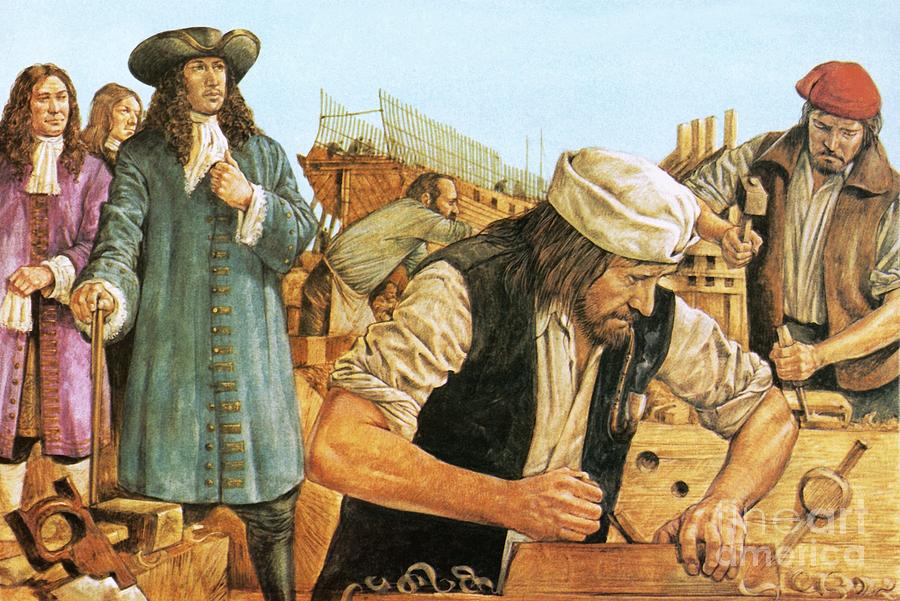

Peter the Great at Deptford in 1698
Peter the Great's trips to Europe
All researchers of the history of the Russian Academy of Sciences and the first Russian state public museum, the Kunstkamera, unanimously bond the idea of the establishment of these oldest Russian scientific institutions with the experience which Peter I gained during his trips to Europe.
Peter the Great was the first Russian Tsar to visit European countries. His first long trip to Europe took place in 1697–1698, within the frame of his so-called “Grand Embassy,” while the second one occurred twenty years later, in 1716–1717.
In between these diplomatic missions, Peter visited a number of cities in North Germany and Denmark in 1711-1713, during the military campaign of the Great Northern War.
Peter tried to stay incognito during the Grand Embassy and took part in it as a Peter Mikhailov, uriadnik (approximately corresponds to the modern military rank of “sergeant”) of the Preobrazhensky Regiment, although his recognizable appearance was hard to disguise. A special wax seal, which the Tsar was setting on each of his letters during his travel, had the inscription: “I am a pupil looking for mentors.”
He delegated the mission of important diplomatic negotiations with European monarchs to three “grand plenipotentiary ambassadors:” Franz Lefort, Fyodor Golovin, and Prokopy Voznitsyn, but de-facto, Peter himself quite frequently participated in negotiations with foreign sovereigns. He believed that this was an easier way for him to get acquainted with everyday life of European citizens, master different crafts, and, among other things, attend private collections of curiosities and scientific cabinets. Together with the Embassy, Peter the Great visited a number of cities in Livonia, Kurland, Prussia, Saxony, Holland, England, and Austria.
During his second travel to Europe in 1716–1717, Peter visited Danzig, Hamburg, Pyrmont, Mecklenburg, Rostock, Copenhagen, Bremen, Amersfoort, Utrecht, Amsterdam, Saardam, Hague, Leiden, Rotterdam, and Paris.
During these journeys Peter was always, whenever possible, meeting with European scholars, visiting private collections and galleries, and natural history cabinets. He used the opportunities of such meetings to invite all sorts of specialists, including academics, to come to work in Russia. Peter was personally and through his envoys establishing connections with book publishers in Holland and Germany; he organized purchases of a number of collections for the Apothecary Prikaz and, later on, for the Kunstkamera; studied anatomy and other sciences. Participants of the Grand Embassy also visited other cities and countries, where, upon Peter’s instructions, they were meeting with academics and publishers, and touring private museums and collections.
Indeed, from the documents, memoirs, and the chronicle of the Grand Embassy (“Journal of Daily Records”) it is known that in all cities visited by Peter the Great, he had a great interest in touring private museums and collections, part of which belonged to royal courts of Europe, and partly to scientists and owners of major trade companies (e.g., Dutch East India Company). It is known that only in Holland, a country which had produced the strongest impression on Peter, in the end of the 17th century, there were several tens of private museums and collections.
A far from complete list of private collections and museums visited by Peter the Great during his travel to European countries in 1697–1698 looks as follows:
– Collection of East-Indian and antique rarities, ship models and machines belonging to Nicolaes Witsen, Mayor of Amsterdam, Administrator of the Dutch East-Indian Company and a scholar
– Collection of antiquities “including coins, medals, and various minerals” of Peter Nicolaes Kalf in Saardam
– Anatomical and zoological museum of the professor of anatomy and botany in Amsterdam, Frederick Ruysch
– Amsterdam Botanical Garden with greenhouses and a museum with samples of the aquatic fauna from the overseas possessions of Holland (accompanied by Fr. Ruysch)
– East-Indian Yard in Amsterdam, where in the company’s buildings collections of Chinese and East-Indian weapons, Chinese paintings and maps were exposed, and a number of rooms were decorated with rare plants
– Home museum of merchant Jacob de Wilde, who had a valuable collection of antiquities: bronzes, carved stones, coins
– Cabinet of Nicolas Chevalier in Utrecht (Later on, in 1721, J. Schumacher acquired from the heirs a part of this collection for the Kunstkamera);
– Peter I visited A. Van Leeuwenhoek, naturalist and founding father of scientific microscopy, and scrutinized his cabinet with the collections
– Botanic Garden and Anatomical Theatre of Leiden University
– Museum of the London Royal Society and Mint collections in the Tower
– Ashmolean Museum in Oxford
– Royal Kunstkamera in Dresden
– Armory, Kunstkamera, and Art Gallery in Vienna, at the court of Emperor Leopold I.
Peter had visited many of these collections and Kunstkameras during his second long journey to Europe in 1716–1717.
In some cases we know the details of Peter’s visits for exploring the collections, which clearly point up his interests. For example, there is a detailed description of his daily visits to the Kunstkamera in Dresden during his short stay in this city in June 1698. Peter arrived in Dresden in the late afternoon and, after dinner, asked to show him the famous Kunstkamera. Vice-regent Furstenberg took him there at one o’clock in the morning, and the Tsar was scrutinizing the collections till the morning; he was particularly meticulous in familiarizing with mathematical instruments and handicraftsman's implements. Next day, after the lunch and visit to Kurfürst’s mother, he visited the Kunstkamera again. On the third day, after watching military exercises, Peter visited the mould yard and, once again, the Kunstkamera. One more time Peter had visited the Dresden Kunstkamera during his stay in Dresden in September 1711[2]. In the course of his third visit to Dresden in November 1712, Peter stayed in the house of the court’s jeweler Johann Melchior Dinglinger. In the collection of “Grünes Gewölbe” (former Kunstkamera), there is a small enamel portrait of the Russian Tsar made by the jeweler’s brother, Georg Friedrich Dinglinger, in remembrance of these visits to Dresden.
In1717, when Peter I got the word that in the collection of Dutch collector Goswin Uylenbroek a Roman sarcophagus is treasured, he took a fancy to see it. The owner made a record of the details of this visit: “When Tsar Peter the Great did me the honor to see my cabinet, and the thing had to be placed into a dark storeroom because of its huge size, His Highness asked for two candelabrums with candles and kneed down to look thoroughly around the whole sarcophagus and each figure on it in all details”.

比利牛斯条约(Treaty of the Pyrenees)是法国路易十四与西班牙腓力四世之间的条约,订于1659年11月17日,它结束了1648年至1659年之间发生的法西战争。
西班牙国王腓力四世因没有得到哈布斯堡的支援,而决定割让边界领土给法国以和平结束战争。该协定还包括法国国王路易十四世和西班牙公主玛丽·泰蕾莎之间的婚约,公主的嫁妆为50万金埃居,分三笔付清。1660年6月9日,婚礼在法国南部城市圣让德吕兹举行。这婚约使未来的路易,成为欧洲权力最大的国王。
Der Pyrenäenfriede (auch Pyrenäischer Friede) war der Friedensschluss zwischen Frankreich und Spanien am 7. November 1659. Er beendete den seit 1635 andauernden Französisch-Spanischen Krieg.
Die kriegerischen Auseinandersetzungen zwischen Frankreich und Spanien hatten den Westfälischen Frieden überdauert. Einerseits hatte Frankreich in Spanien interveniert (Aufstände in Katalonien, 1640 bis 1652), andererseits hatte Spanien die Fronde unterstützt.
Der Vertrag wurde an einem neutralen Ort, der Fasaneninsel im Fluss Bidasoa in der Nähe von Hendaye (Frankreich), unterzeichnet.

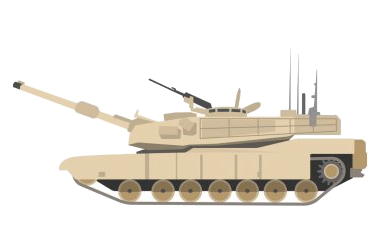

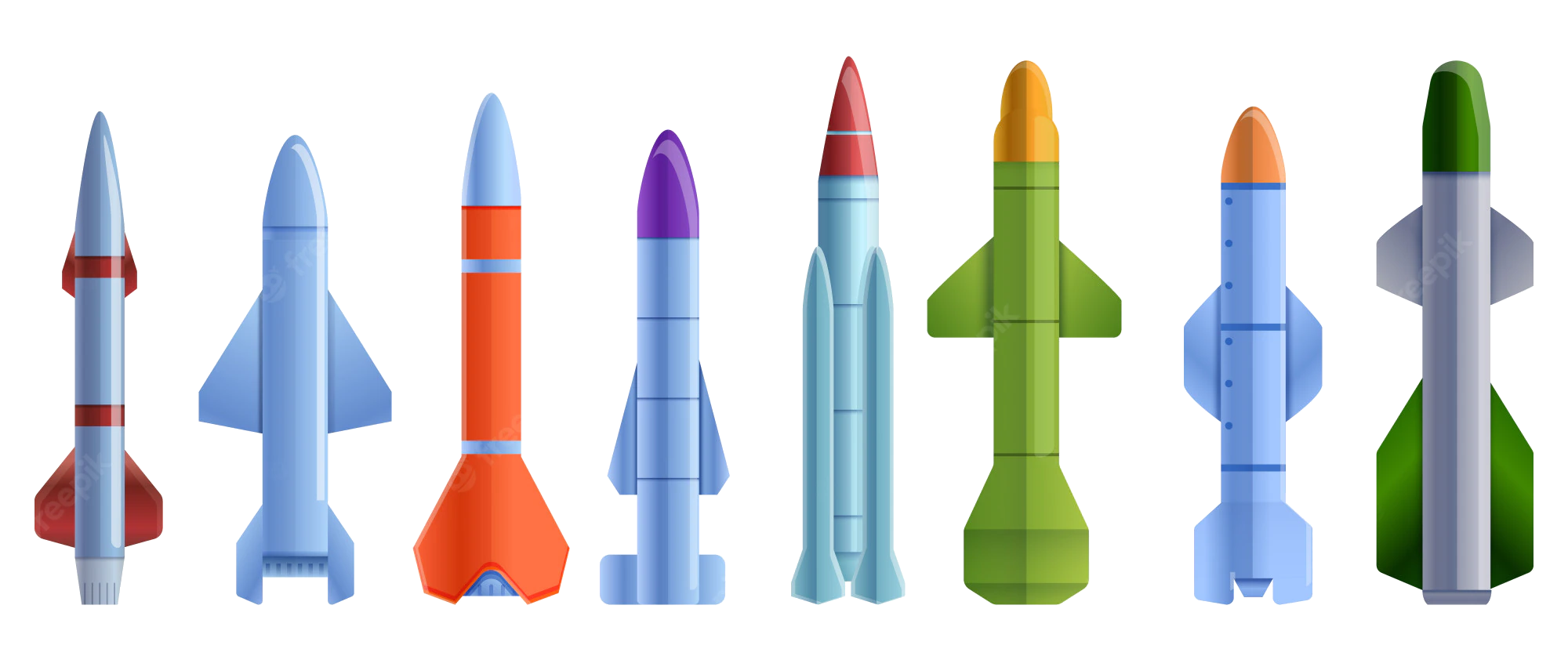 军事、国防和装备
军事、国防和装备
 运输和交通
运输和交通






 科学技术
科学技术
 历史上的硬币,纸币
历史上的硬币,纸币

